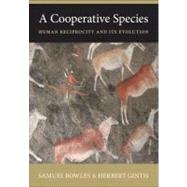
What is included with this book?
| Preface | p. xi |
| A Cooperative Species | p. 1 |
| The Evolution of Altruism in Humans | p. 8 |
| Preferences, Beliefs, and Constraints | p. 9 |
| Social Preferences and Social Dilemmas | p. 10 |
| Genes, Culture, Groups, and Institutions | p. 13 |
| Preview | p. 18 |
| Social Preferences | p. 19 |
| Strong Reciprocity Is Common | p. 20 |
| Free-Riders Undermine Cooperation | p. 22 |
| Altruistic Punishment Sustains Cooperation | p. 24 |
| Effective Punishment Depends on Legitimacy | p. 26 |
| Purely Symbolic Punishment Is Effective | p. 29 |
| People Punish Those Who Hurt Others | p. 31 |
| Social Preferences Are Not Irrational | p. 32 |
| Culture and Institutions Matter | p. 33 |
| Behavior Is Conditioned on Group Membership | p. 35 |
| People Enjoy Cooperating and Punishing Free-Riders | p. 38 |
| Social Preferences in Laboratory and Natural Settings | p. 39 |
| Competing Explanations | p. 42 |
| The Sociobiology of Human Cooperation | p. 46 |
| Inclusive Fitness and Human Cooperation | p. 48 |
| Modeling Multi-level Selection | p. 52 |
| Equilibrium Selection | p. 57 |
| Reciprocal Altruism | p. 59 |
| Reciprocal Altruism in Large Groups | p. 63 |
| Reputation: Indirect Reciprocity | p. 68 |
| Altruism as a Signal of Quality | p. 71 |
| Positive Assortment | p. 72 |
| Mechanisms and Motives | p. 75 |
| Cooperative Homo economicus | p. 79 |
| Folk Theorems and Evolutionary Dynamics | p. 80 |
| The Folk Theorem with Imperfect Public Information | p. 83 |
| The Folk Theorem with Private Information | p. 86 |
| Evolutionarily Irrelevant Equilibria | p. 87 |
| Social Norms and Correlated Equilibria | p. 89 |
| The Missing Choreographer | p. 90 |
| Ancestral Human Society | p. 93 |
| Cosmopolitan Ancestors | p. 95 |
| Genetic Evidence | p. 99 |
| Prehistoric Warfare | p. 102 |
| The Foundations of Social Order | p. 106 |
| The Crucible of Cooperation | p. 110 |
| The Coevolution of Institutions and Behaviors | p. 111 |
| Selective Extinction | p. 115 |
| Reproductive Leveling | p. 117 |
| Genetic Differentiation between Groups | p. 120 |
| Deme Extinction and the Evolution of Altruism | p. 121 |
| The Australian Laboratory | p. 123 |
| The Coevolution of Institutions and Altruism | p. 124 |
| Simulating Gene-Culture Coevolution | p. 126 |
| Levelers and Warriors | p. 130 |
| Parochialism, Altruism, and War | p. 133 |
| Parochial Altruism and War | p. 135 |
| The Emergence of Parochial Altruism and War | p. 138 |
| Simulated and Experimental Parochial Altruism | p. 142 |
| The Legacy of a Past ôRed in Tooth and Clawö | p. 146 |
| The Evolution of Strong Reciprocity | p. 148 |
| Coordinated Punishment | p. 150 |
| Altruistic Punishment in a Realistic Demography | p. 156 |
| The Emergence of Strong Reciprocity | p. 159 |
| Why Coordinated Punishment Succeeds | p. 163 |
| A Decentralized Social Order | p. 164 |
| Socialization | p. 167 |
| Cultural Transmission | p. 168 |
| Socialization and the Survival of Fitness-Reducing Norms | p. 171 |
| Genes, Culture, and the Internalization of Norms | p. 173 |
| The Internalized Norm as Hitchhiker | p. 176 |
| The Gene-Culture Coevolution of a Fitness-Reducing Norm | p. 179 |
| How Can Internalized Norms Be Altruistic? | p. 180 |
| The Programmable Brain | p. 183 |
| Social Emotions | p. 186 |
| Reciprocity, Shame, and Punishment | p. 188 |
| The Evolution of Social Emotions | p. 191 |
| The ôGreat Captains of Our Livesö | p. 192 |
| Conclusion: Human Cooperation and Its Evolution | p. 195 |
| The Origins of Human Cooperation | p. 196 |
| The Future of Cooperation | p. 199 |
| Appendix | p. 201 |
| Altruism Defined | p. 201 |
| Agent-Based Models | p. 202 |
| Game Theory | p. 207 |
| Dynamical Systems | p. 209 |
| The Replicator Dynamic | p. 212 |
| Continuation Probability and Time Discount Factor | p. 213 |
| Alternatives to the Standing Model | p. 214 |
| The Prisoner's Dilemma with Public and Private Signals | p. 215 |
| Student and Nonstudent Experimental Subjects | p. 217 |
| The Price Equation | p. 218 |
| Weak Multi-level Selection | p. 222 |
| Cooperation and Punishment with Quorum Sensing | p. 223 |
| References | p. 225 |
| Subject Index | p. 251 |
| Author Index | p. 255 |
| Table of Contents provided by Ingram. All Rights Reserved. |
The New copy of this book will include any supplemental materials advertised. Please check the title of the book to determine if it should include any access cards, study guides, lab manuals, CDs, etc.
The Used, Rental and eBook copies of this book are not guaranteed to include any supplemental materials. Typically, only the book itself is included. This is true even if the title states it includes any access cards, study guides, lab manuals, CDs, etc.